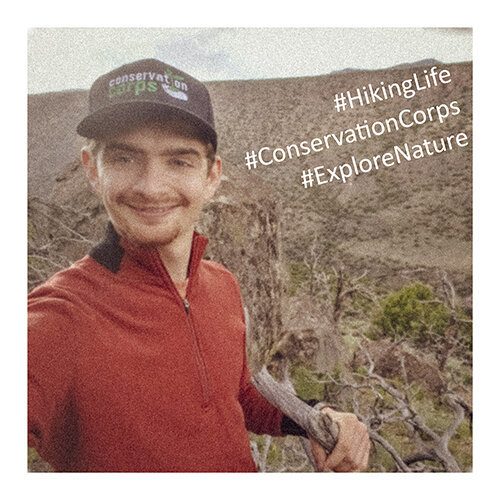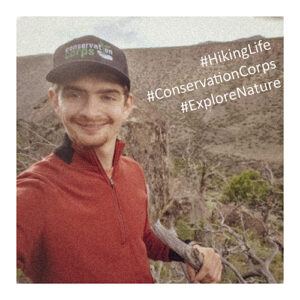Is Social Media Bad for the Environment?

by David Minor, Communications Outreach Specialist/ AmeriCorps Member with MN DNR Scientific and Natural Areas through Conservation Corps’ Individual Placement program
It’s an interesting question. The answer that I have landed on is… it depends.
Why would it be a bad thing?
As scenic wilderness areas get more exposure on social media, it drives more traffic to those places. Increased visitor traffic can have many problems, including more erosion and more negative interactions with wildlife. It’s not just the increased traffic, but also how it’s changing the way people interact with nature. Sometimes people go a little too far to get the perfect ‘gram. They might damage sensitive habitat, or worse, put themselves in imminent danger.
It’s not only the direct danger to the land and people though, it also effects how people think about natural areas. If you haven’t seen The Social Dilemma documentary on Netflix, I recommend it. It described how social media use can be detrimental to the mental health of teens, especially young girls. It can be a constant comparison to a perceived “ideal.” That is bad for your mental health, and affects how you view the world. Does the same (or similar) thing also happen with nature? I would argue yes.

What is “nature” in your mind? A lot of people might first think it is untouched by humanity, or point to the National Parks, or wilderness areas. Not as many people would say city parks, or the everyday plants and animals that surround us. Why not? This mindset is removing a lot of valid things from the definition of nature. If we only accept the most “pristine” form of nature, then everything else isn’t as important to protect. If we accept that strict definition, then it excludes and diminishes a lot of people’s valid experiences with in the outdoors. Not everyone can afford to visit, or feels welcome in this definition of nature. If we diminish people’s experience of everyday nature, they will care less about it, or will simply not notice when it is gone. My point here: watching ants on the sidewalk is a valid exploration of nature. Yes, National Parks are great and important, but so is literally everything else. It all needs care and protection.
So, social media has had some negative effects, but can it also be a good thing?
My last point I made can be turned around into a positive. Increased exposure of spectacular wilderness areas on social media can connect these places to more people who may otherwise be unable to experience them. More people will learn about these awesome places online, and more people will care about protecting them. I cannot remember the exact quote or where it came from, but “people won’t care about what they don’t see.” In my current position with the Scientific and Natural Areas Program, I post to social media nearly every day. I find it is uplifting when people comment about something new they learned, or when they attend a volunteer stewardship event that we promoted online.

Additionally, when used responsibly, social media can have other great uses. It can be a tool for communicating during nature disasters; it can be used to create groups across specific communities, or across the globe to talk about some of these issues; it lets everyone have a two-way communication channel with conservation professionals, policy makers, and companies; and it can be very effective at fundraising.
Social media can have powerful positive or negative effects, depending on how it is used. Here are a few tips I try to abide by to keep it positive:
- Follow all other guidelines you normally would when out in nature: Leave No Trace, give wildlife space, be aware of your surroundings, watch where you step, stay on designated trails when required, etc.
- Consider removing location information from photos and posts. There are plenty of cool things to see in nature, we all don’t need to go see the same ones. If I mention location in a post, I usually try to keep it general rather than specific.
- Post more about “everyday nature”. I like taking picture of bees, leaves, and insects I see while walking through the neighborhood. There is a whole lot to wonder at if you look small.
- Make sure your social media posts reflect good stewardship of the land.
- Don’t diminish other people’s experiences or shame them if they are doing something wrong. Not everyone is an expert, we are all learning.
- Consider not posting to social media every time you are out in a natural area, take a photo to remember the occasion, then be present in nature.
- Here are some additional tips from the Nature Conservancy
If you are interested in more discussion on conservation and communications, check out this blog. It has a lot of good discussion on topics like this and links to resources.
What are your tips for using social media to positively affect conservation?
Help prepare the next generation of environmental leaders. Donate today to provide opportunities for youth and young adults to gain the experience and training while completing conservation projects.
